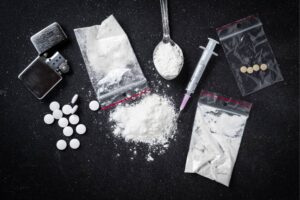Substance abuse affects millions of people in the United States every year, yet many misguided understandings exist. Addiction is a disease, not a choice. The people that struggle with addiction did not choose for their lives to play out this way, but choosing to get better isn’t always easy.
Substance abuse is often misunderstood, meaning that the people seeking help are misunderstood. We need to understand it better to better treat addiction and allow for a more open-minded approach to treating individuals with substance use disorder.
Keep reading to learn more about different statistics connected to substance abuse of different kinds.
What Is Substance Abuse?
Substance abuse is a disease that impacts a person’s brain and behavior and causes intense cravings for substances such as alcohol, cocaine, methamphetamines, and more. People who struggle with substance use disorder use even though they are aware of the consequences. They become reliant on the substance and can experience distress and withdrawals without it.
Causes of Addiction
People can be impacted by addiction as a result of many factors. It is a mental health disorder that has both environmental and genetic influences.
Environmental: Someone who grows up around other people with substance use disorder can be influenced to use substances as they develop. You might have friends that don’t have your best interests in mind and introduce you to substances. You might have grown up with trauma and other mental health issues that were never treated. All of these things in your environment can lead you to addiction, whether or not you want them to.
Genetics: Addiction is a disease that can be passed down through genetics. Some people are more prone to developing substance use disorder, especially if people in their bloodline struggle with it. However, not all people that have the addiction gene become substance abusers.
Addiction and Abuse Statistics
Every substance has different statistics attached to it. Not all substances affect a person in the same way; some are considered more dangerous or damaging than others. It’s important to know the different statistics for each substance to create a more informed environment.
Substance abuse does not just impact the person who is using. Friends and family suffer at the same time as the people using them, and trying to get help for your loved ones is not easy. Staying informed and understanding the intricacies of substance use can help everyone involved seek help.
Alcohol
Alcohol is one of the most commonly used substances in the United States. With it being legal, many people use alcohol once they have turned 21. Additionally, there are many underage users of alcohol, which can be dangerous, especially when being misused.
Even though it’s the most abused substance, people with alcohol use disorder often go untreated. This is partly due to the general acceptance of alcohol use in the United States. Some statistics that you should know about binge drinking are:
- Alcohol use disorder (AUD), alcoholism, and alcohol abuse account for nearly six percent of global deaths.
- Around 141,000 people in the United States die every year from the effects of alcohol.
- One in 10 Americans over the age of 12 suffer from AUD.
- Men make up about 62 percent of people diagnosed with Alcohol Use Disorder; women make up 36 percent of people diagnosed with AUD; adolescents make up about three percent of people with AUD.
- As with many substances, excessive alcohol consumption and alcohol-related substance use disorders are often associated with other mental health disorders, like depression and anxiety.
Opioids
The opioid epidemic is a public health emergency affecting thousands of Americans daily. Anyone can use opioids, and many start when prescribed an opioid to treat pain. There is a high risk of overdose when using a high dosage of opioids. They can slow your breathing which can lead to death.
Opioids are controlled substances that, in the wrong hands, can be detrimental to a person’s livelihood. Statistics about opioid use disorder (OUD) are:
- Almost four percent of adults in the United States abuse opioids.
- From 1999 to 2019, the percentage of overdoses on opioids increased by over 519 percent.
- Opioids are a factor in seven out of 10 overdoses that occur.
- There is an average of 103,333 opioid users a day.
- Teens who were prescribed opioids were 33 percent more likely to misuse opioids after high school.
- Fentanyl is the most dangerous opioid out there, with Fentanyl overdoses surpassing prescription opioid overdoses by over 550 percent.
Heroin falls under opioid misuse disorder and is one of the more dangerous opioids to get your hands on.
Some statistics involving heroin are:
- Fourteen thousand people die every year from heroin overdoses.
- Over six million Americans have used heroin in their lifetime.
- Eighty percent of people who misused heroin first abused prescription opioids.
- Over ten thousand men die annually from a heroin overdose; 3,500 women die annually from a heroin overdose.
Marijuana
With the legalization of marijuana in parts of the United States, like alcohol, it has become more widespread and accepted. While it’s thought that cannabis is less dangerous than other drugs, such as alcohol and opioids, people can still develop substance abuse issues with it.
Some statistics that are important to know are:
- There are about 55 million people who use marijuana in the United States.
- Almost half of Americans have tried marijuana once in their lifetime.
- The amount of people that use marijuana is about 20 million more than the number of people who currently use tobacco.
- Seventy-six percent of the population think marijuana use is less dangerous than tobacco use.
- Chronic users can develop a mental dependency on marijuana, resulting in physical symptoms.
- Forty percent of high school students have admitted to trying marijuana before.
- Thirteen percent of young users will develop a dependency on marijuana.
Stimulants
Stimulants include various drugs known for the euphoric and energetic feeling you get when using them. They also increase your heart rate and blood pressure, putting you at risk for heart conditions in the future or overdosing.
There are also prescription stimulants like Adderall and Preludin that treat people for disorders such as ADHD or help someone lose weight. Without proper care, these prescription drugs can be abused as well.
Stimulants include:
- Methamphetamine
- Cocaine
- Nicotine
Some statistics about stimulants are:
- Almost two million people admitted to having used meth in 2018.
- Over five million people admitted to having used cocaine in 2018.
- One in five drug overdose deaths was related to cocaine use.
- Caffeine is considered a stimulant and can become addicting, just like other stimulants.
Hallucinogens
Hallucinogens, like marijuana, have started to make their way into the mainstream. Some medical professionals now use ketamine for treatment-resistant depression in some parts of the United States. Additionally, the legalization of mushrooms (psilocybin) in Colorado has sparked interest nationally.
LSD and ecstasy are also hallucinogens, as well as PCP and DMT. Some statistics on hallucinogens are:
- Around 7.4 million people have used hallucinogens in the last year.
- Around 493,000 people have a hallucinogen use disorder.
- LSD is the most powerful hallucinogen and can create the most issues for a person later on in life.
How To Find Help With Substance Abuse
No matter what you or a loved one is struggling with, Soba Recovery Center in San Antonio, Texas, is here to help. If you think that someone you know is in need of a treatment program for alcohol or drug use disorder, it’s never a bad idea to give us a call and discuss our treatment options. Our healthcare providers are ready and able to help.
Substance abuse is a debilitating mental health disorder that can ruin a person’s life. No matter what the substance is that you use, the effects that come from long-term misuse can be deadly. Taking care of yourself is the best thing you can do, and seeking addiction treatment might be a part of your self-care routine.
Call today to learn more about our services and how we can get you on the road to recovery today!
Sources:





